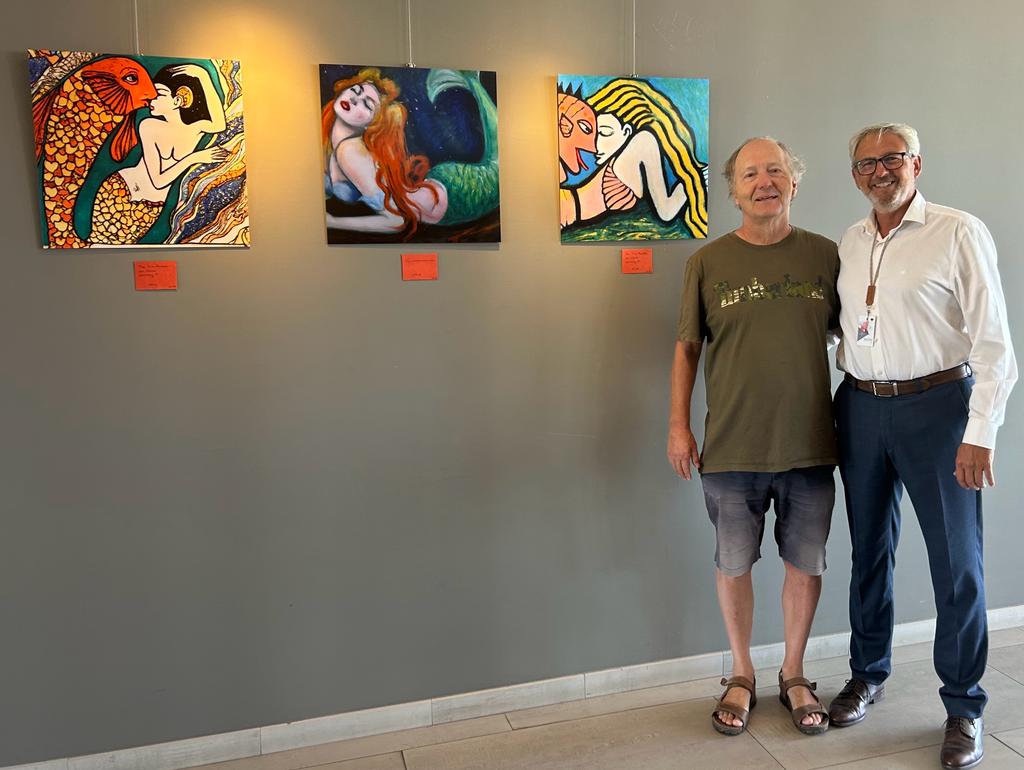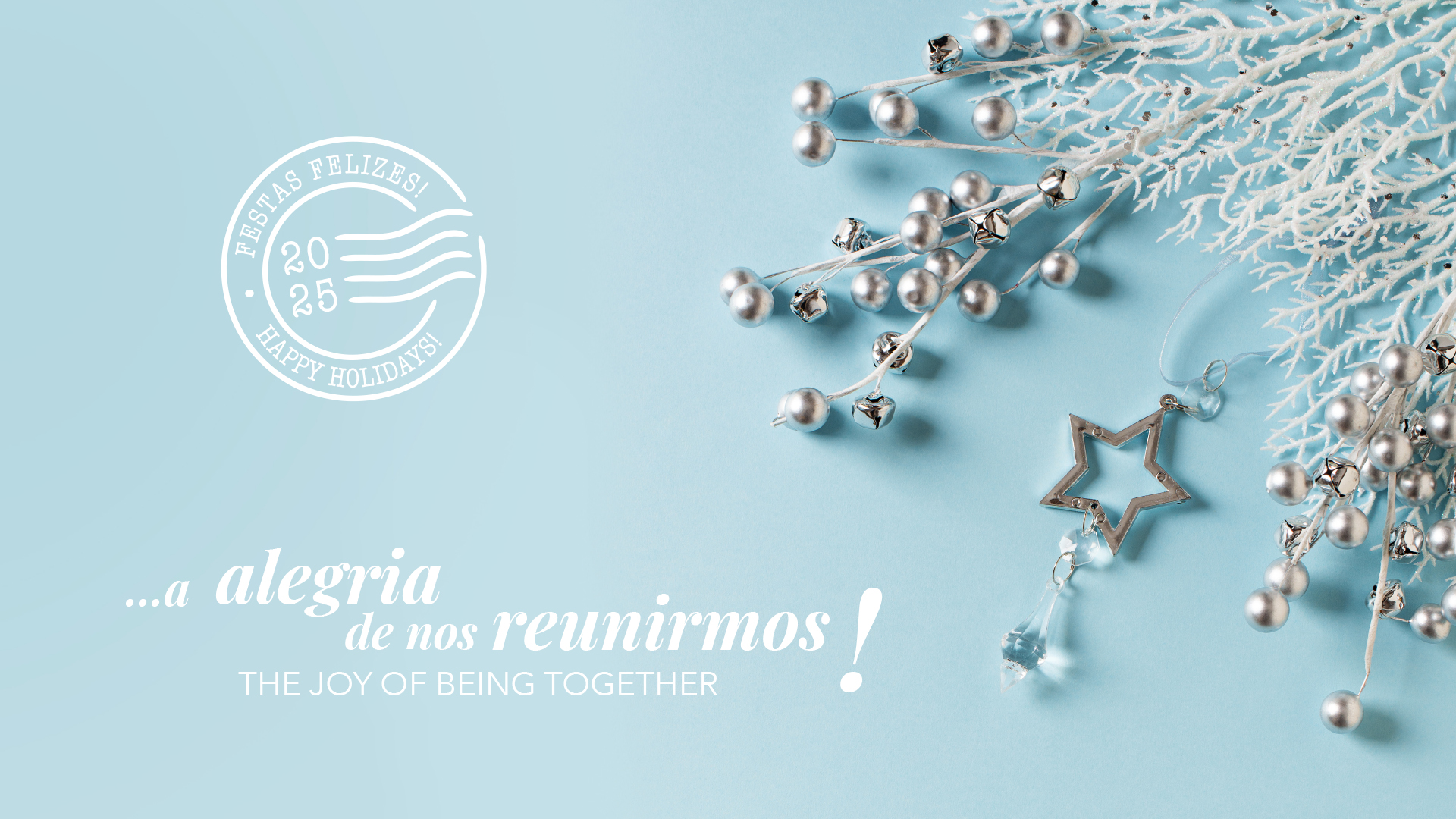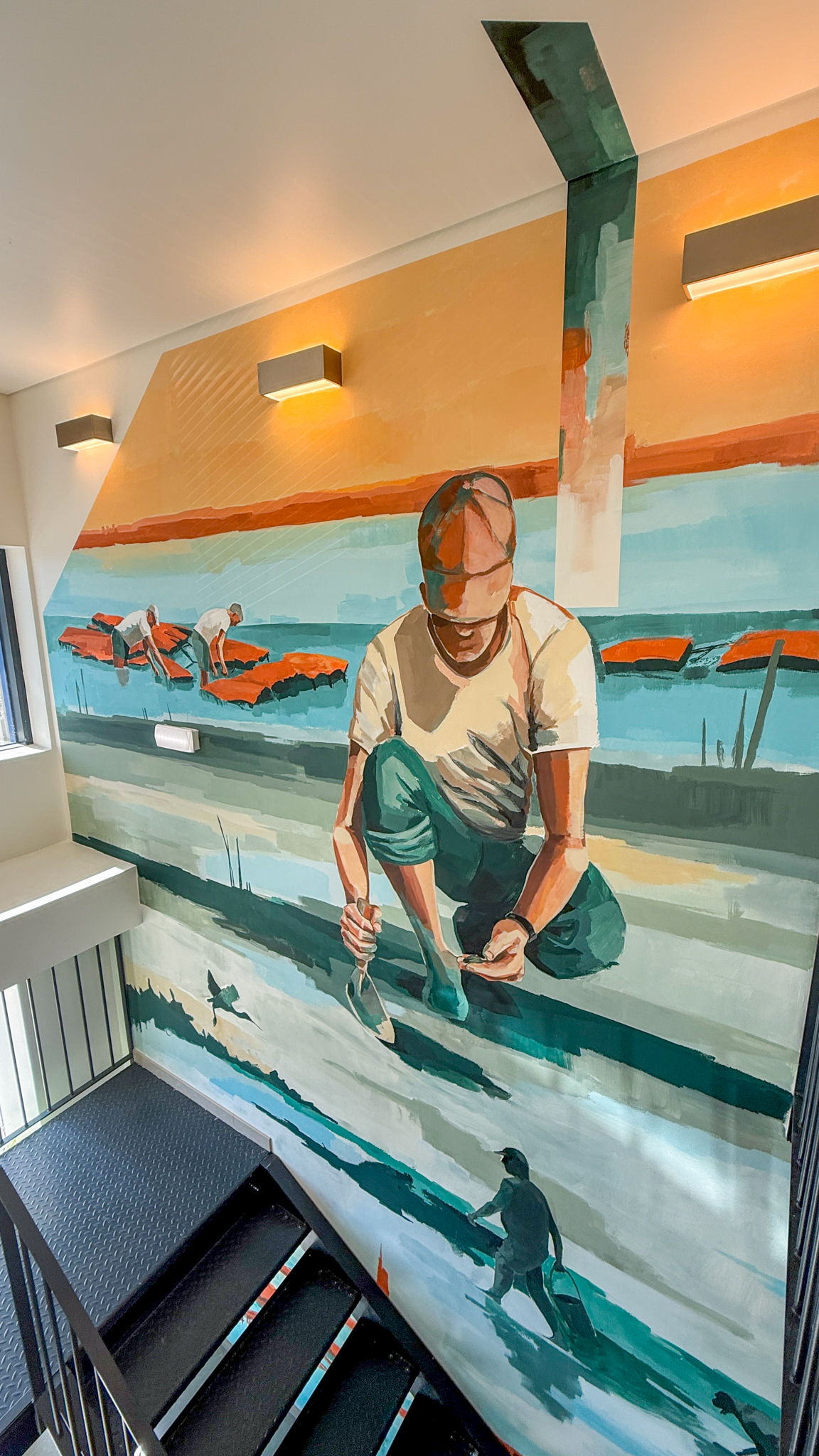
AP Maria Nova Lounge hosts an exhibition of art by Artificial Intelligence.
The AP Maria Nova Lounge will inaugurate the exhibition “Mermaids” on August 1st, featuring original artworks created with the assistance of Artificial Intelligence (AI) by artist Peter Heer.
In the catalog of Sereia Editora, responsible for the exhibition, it can be read:
“By presenting this first collection of AI-generated artworks, we invite you to open your mind to the vast potential of collaboration between the human artist and AI, to venture into an exciting future where the lines between human and machine creativity blur, inaugurating an era of unprecedented artistic expression.”
When confronted with the controversy surrounding AI in art, Peter Heer responded as follows:
“Most traditional visual artists I have spoken to in recent months have not embraced or dismissed AI-generated images. However, I would like to share a purely fictional conversation I had with Salvador Dali. When presented with AI-generated works inspired by himself, Dali contemplated them with admiration, smiled widely, and signed them without hesitation, saying, ‘The world needs more Dali, and I will live forever!’. And so did Klimt, Picasso, and many others.”
The AP Maria Nova Lounge opens its doors once again for an art exhibition, contributing to the promotion of local cultural activities and deepening its connection to the community of Tavira.
The Sereia Editora proudly presents the collection “Mermaids,” using advanced artificial intelligence technology. Artist Peter Heer explores his fascination with these mythical creatures from various angles.
In “The Lightness of Being,” Peter Heer explores the feeling of weightlessness – absence of gravity – that astronauts experience in space or divers in the water when they reach a point of zero buoyancy. Inspired by Gustav Klimt, this mysterious image takes us into the depths of the ocean, to places untouched by humans, where mermaids have found their refuge.
Also inspired by Klimt, “When the Ocean Aches” depicts a mermaid in a very vulnerable situation, appearing cold or fearful. Heer has in mind the suffering of all creatures in the oceans and marine ecosystems. This mermaid no longer finds peace in her aquatic home; her natural habitat has become inhospitable. Without an alternative, with no escape possible, we see her suffering from our unconsciousness and cruelty.
The issue of climate change is also addressed, this time with malicious irony. Inspired by Picasso, “The True Reason for Global Warming I and II” portrays mermaids in erotic delights with other marine creatures.
Reaching a climax of increasing heat, the section culminates with the onomatopoeic-titled artwork “Hummmmmm,” depicting a mermaid in an orgasmic climax, inspired by Renoir.
The contemplative quality of these mythical creatures emerges in a tribute to Seurat’s pointillism, as we can appreciate in “Serena Mermaid.”
When confronted with the controversy surrounding AI in art, Peter Heer responded as follows:
“Most traditional visual artists I have spoken to in recent months have not adopted or disparaged AI-generated images. However, I would like to share a purely fictional conversation I had with Salvador Dali. When presented with AI-generated works inspired by himself, Dali contemplated them with admiration, smiled widely, and signed them without hesitation, saying, ‘The world needs more Dali, and I will live forever!’. And so did Klimt, Picasso, and many others.”




